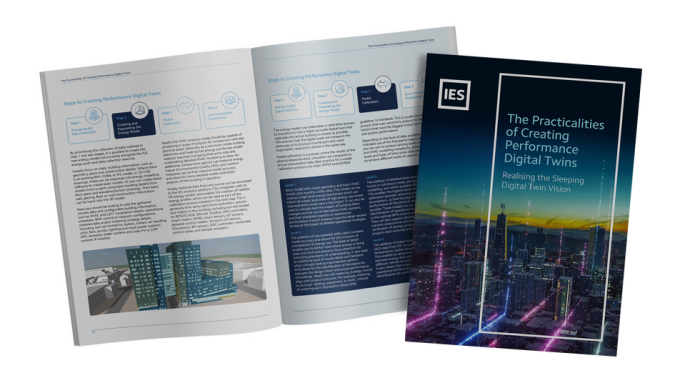In setting up the SPA Enterprise it was acknowledged that BIM principles would drive outperformance in both the project and asset lifecycles, and therefore an early focus ensured that the foundations were in place to enable SPA to maximise benefits from data and information.
To smooth the integration of our physical assets and the associated data and information produced our enterprise architecture focussed on delivering a solution that would:
- Maximise the benefits from the existing Anglian enterprise.
- Ensure that data and information would integrate seamlessly with existing Anglian repositories.
- Easily be transitioned from the project to the asset information model.
This approach would not hinder bringing any additional enterprise systems that would benefit Anglian Water but would ensure that any legacy systems were planned for seamless integration, giving a longer-term benefit (blueprint) for other and future Alliances.
Development of the BIM strategy identified the need for the following BIM tools in line with recommendations in PAS1192-2 (now superseded):
- BIM Execution plan – in response to the EIR (Exchange Information Requirements).
- Common Data Environment (CDE) – to allow exchange of information within the project team and the wider supply chain eco-system – GIS (Geospatial Information System), BIM360, Azure, SharePoint.
- Master Information Delivery Plan (MIDP) and Task Information Delivery Plan (TIDP) – to manage delivery of information during a project.
- Supply chain EIR.
- Asset Information Model.
- Naming convention.
During the initial period SPA has had to work closely with Anglian Water to ensure that we have the following in place:
- Clear information repositories.
- Data stewards.
- Approved data structures.
- Collaborative communication mechanisms.
- Appropriate security and authentication checks.
- Appropriate Governance.
- Clearly defined and agreed processes.
As an early adopter on the Project13 programme (Centre for Digital Built Britain) the relational development of our supply chain eco-system was essential.
All our suppliers complete a Collaboration Request Form (MS Flow Automate), and a BIM Capability Assessment (MS Flow Automate). We work through the SPA Supplier EIR with all partners to share our information management standards and determine how much we need to work with them to ensure the benefits of BIM are realised.
Part of this induction is being clear on the expected deliverables and the format of these, and how they can interact with our common data environment. For all suppliers we set up a dedicated folder in our SharePoint and BIM360 environments for all information exchange and should there be a need for the supplier to access GIS or BIM models we assist them from a technological and behavioural perspective.
We have created an automated OCRA (Originate Check Review Approve) process that SPA end-users use for Quality Assurance (QA) in SharePoint and BIM360. With BIM360 the OCRA workflows functionality is built in, and we can create new, customisable checking procedures at will.
The CDE storage philosophy of project deliverable information is data driven, utilising file metadata to structure, sort, and search for information. ‘Containerisation’ of information utilising subfolder subsystems is kept minimal thereby facilitating a transparency and consistency in the storage of our information across all projects.
A Digital Delivery lead was put in place by SPA as the platform owner for BIM 360 supported by a team of BIM Engineers. The setup, configuration and management of the platform is governed by the BIM Execution Plan and the CAD (Computer Aided Design) strategy.
Throughout the design phase of projects in SPA, the various teams have endeavoured to create, and use coordinated, internally consistent, computable information about the project and provide this information to project stakeholders in the most valuable format possible. Following the statutory process and environmental impact study phases for the initial projects, the project moved towards detailed design with a multi-disciplinary design team. With support from the senior leadership in SPA, the design team have embraced a production-based approach which has entailed the adoption of 3D modelling techniques and BIM workflows.
Data is transferred from analysis and design applications directly into an integrated model, leveraging 3D modelling techniques to enable clash detection, design visualisation and ‘optioneering’ as part of SPA’s Digital Rehearsal approach. The 3D and 2D information models not only serve as a visual communication tool to convey the infrastructure design to the various teams, statutory bodies, and public stakeholders, but was also a vital tool to inform Anglian Water of the development of the assets they will own and operate. The project team have utilised various BIM and GIS technology to enhance and communicate the various constraints (environmental, legislative, physical, ecological, hydraulic, geotechnical etc.) and complex design effectively to all stakeholders. This has been achieved in many formats utilising various software products throughout the project’s life cycle. This will include the use of a virtual reality (VR) gaming engine and the direct importation of the single integrated 3D tunnelling compound model into the GIS environment.
This means that design conflicts are identified and rectified before construction drawings are completed and issued. Similarly, 3D simulations help promote safety and avoid costly inefficiency by identifying potential issues and mitigating against them in advance.
It is estimated that setting up this framework will generate at least £1723k net savings over the project period using BIM. This is estimated by the reduction in individual time saved by designers, as well as project time saved.
It should be noted that there are many non-financial benefits that have also been identified including benefits in safety (better identification of safety changes), to the wellbeing of our staff (reduced driving as collaboration in the model can be remote), and to the environment (reduced Carbon as less miles driven to meetings). There will also be Operational (Opex) savings because of the way that we collate, capture, manage and re-use data within the asset information model. These operational cost savings are yet to be quantified. There are also non-quantifiable benefits expected from a reduction in rework and prolongation.
In conclusion the introduction of BIM techniques has greatly benefitted the Alliance and will continue to do so throughout the project and asset lifecycle.



Leave a comment